Neve Cathedral: Studio Mozart’s Journey to the Next Level
What do you call a man who launches his first studio in a communist bloc ex-bomb shelter? Who moved his family and facility a half-world away to record and mix music in America? Who learned English from reading Pro Tools manuals??!!
That is a 100% SonicScoop-certified Audio Warrior, and his name is Kostadin Kamcev.
Today, Kamcev owns and operates Studio Mozart in Little Falls, NJ. Tucked away in this quiet neighborhood right off Route 46, it’s the proverbial hop/skip/jump via car, bus or train from NYC. For a growing client list of locals and regional visitors – including Lenny White, Steve Smith, Neal Schon and many more – word has been spreading not just for Kamcev’s dedication, but his sonic results.
Beyond Kamcev’s considerable expertise, the draw of Mozart is easy to see. It provides the NYC area with a much-needed room for spacious live tracking, courtesy of a 17-foot cathedral ceiling with four ISO booths. Also onsite is an assortment of delish keys including a Yamaha Conservatory C7 Grand Piano, Hammond B3 with a Leslie 122, and Fender Rhodes Suitcase, plus plenty of amps, guitars and drums.
In the Mozart control room, things are equally appealing, thanks to a pristine Neve VR60 with Flying Faders and Total Recall Automation, modified with Musgrave Modification on all channels. Meanwhile, that loaded producer’s desk isn’t just for show: Kamcev “uses everything,” hand-building replicas of many classic outboard units to go along with the originals he’s stocked up with. A CLASP system seamlessly integrates Pro Tools HDX with Studer A827 2-inch 24-track and MCI JH24 2-inch 16-track tape machines.
And the monitoring? As unique as it is powerfully accurate, via five sets of speakers headlined by a pair of Atomic Instrument 1015 mains.
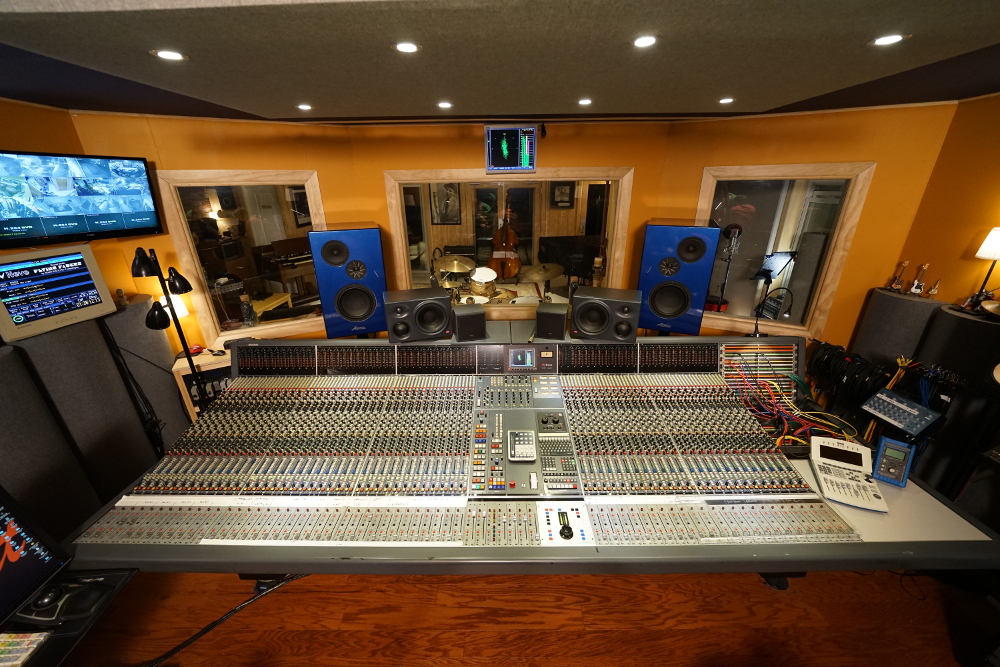
A Musgrave-modified Neve VR60 with Atomic Instruments main monitors are at the center of Studio Mozart.
Macedonia to The Garden State
The story of Studio Mozart begins a long way away in Macedonia, a small Eastern European nation landlocked by the likes of Kosovo, Serbia, Bulgaria, Greece and Albania. Although Macedonia’s history dates all the way to antiquity, its long history didn’t add up to a lot of clout in the 20th Century, when it was annexed and re-annexed by Yugoslavia until finally breaking free from socialism in 1991.
Studio Mozart came into being not long after that historical landmark in 1992, when Kamcev – a locally famous musician whose audio engineering skills were developing quickly – launched a radio station, dubbed “Radio 1,” which at the time stood as only the second privately-opened radio station in all of Macedonia.
“From there I moved the studio into one of the city’s bomb shelters as they were sitting unused — the city started to rent them,” recalls Kamcev. “That was underground and you could not hear anything from outside, nor studio noise coming from the inside.
“After spending a couple of years there,” he continues, “demand was rising and I basically moved and commissioned my studio to the former recording space buildings of the National Television in Macedonia, in the capital of Macedonia, Skopje in 1997 in only one night! I installed all the gear, and wired the mic lines and the multitrack lines, so the studio was ready to hold a session the next day.”
The next key move for Kamcev was in the beginning of the year 2000, when he took the bold step of moving to America (ESL classes supplemented the English skills he’d gleaned from translating those aforementioned Pro Tools manuals). He officially started operating Studio Mozart again in 2005, in Clifton, NJ, before moving the studio in 2016 to the current Little Falls location – where he could finally go big.
“I was very lucky to find the place where Studio Mozart is nowadays, as the house had this extension in the back, 1500 square feet in size, with a 17-foot cathedral ceiling,” he says. “My previous space was only 420 square feet, so naturally 1500 square feet provides much better accommodation for the clients and me. I made sure that the creative atmosphere I had in my old place was kept, and even improved.”
Despite his considerable audio skills, Kamcev recruited help to build out the space, settling on Jeff Headback of HD Acoustics as his acoustical designer. “From the conversation with him, I knew I was in good hands,” Kamcev says. “I sent him the initial sketch for the space, and he came up with ideal proportions for the control room. His knowledge of acoustics and acoustical materials is invaluable. The room sounds excellent and translates to the real world. After getting the plan from him, he insisted not to change anything even by an inch, if I wanted to get a great-sounding control room. He was right – and that’s exactly what happened!”
Hear Mozart Studio in action via Steve Smith’s 2017 release, “Heart of the City.”
Live Baby
Studio Mozart’s large live room (27-feet x 20-feet with a 17-foot cathedral ceiling) is capable of accommodating various configurations of bands, small orchestras and choirs. The studio’s Yamaha C7 Conservatory grand piano, Hammond B3 with Leslie 122 and the Fender Rhodes electric piano all especially benefit from the surroundings.
Drums recorded in the big live room can get to the huge level, while the four sizeable ISO booths allow the studio to accommodate almost every type of session. “The live room and the booths are wired directly with 60 mic lines with the console,” notes Kamcev. “Our Pro Tools is set up for simultaneous recording, with 48 inputs as well as 48 outputs on the mixdown through the Neve VR console.”
A Star Neve VR
“Every aspiring audio engineer’s dream is to have a large-format recording console,” Kamcev says. “I was always torn between Neve and an SSL G+. I commissioned and worked on an SSL G+ for some time, although somehow the sound of the mic pres was not my cup of tea.
“Then I got involved in installing and re-freshening a Neve VR with the Neve VR wizard himself; John Musgrave. I was on that project for a week, and learned as much as any engineer can from the master: I saw all the signal paths and module parts from the board, how they interact with each other, and got a hand on one of the most highly appreciated modifications for the VR, the ‘Mad Lab’ Modification (the Musgrave Mod).
“I had the chance to directly compare the sound of the modules with three levels of modification: Full channel Mod (coming from Chung King Studios), Partial Mod (coming from the Hit Factory), and no mod (coming from House Of Blues, Memphis). The Full Channel Mad Lab Modification sounded way more superior than the other two. I Learned that today’s flagship Neve 88R was born out of the Mad Lab Modified Neve VR channels.”
While becoming endowed with his hard-won Neve wisdom, gaining all that knowledge, Kamcev was also in the process of moving his studio and selling his trusty Trident Vector 432 board. Not long after finding a buyer for the Trident, Kamcev found out that another Neve master, Gregory Davis, who served as a supervisor for US Neve technicians in the 1980’s and ’90’s, had a VR console in mint condition and available for sale to the right buyer.
Kamcev persuaded Davis to take him up to Connecticut for a look at the console where it was being stored – it was worth the journey. “What I saw was the most beautiful VR I’ve ever seen,” he recalls. “He had it packed very meticulously, every channel was in giant anti-static bags and bubble-wrapped. We made the deal that same day.”
It turns out that Kamcev’s Neve VR console had originally been commissioned in NYC’s famed Apollo Theater, where Gregory had acquired it for himself with the idea that he would open a recording studio one day. “That never happened, and 12 years later I got it out of his storage space,” says Kamcev. “The console has Flying Faders and Total Recall Automation, and has been re-capped and modified on each channel with Mad Labs Modification. Additional hardware upgrades included a Z-Sys remote control, Crane Song Avocet II remote control and DK-Audio MSD-600 ++Enhanced, upgraded with surround capabilities into the master section chassis itself.”
Making the Monitors
After that level of attention to the console and live space, it’s not surprising that Kamcev was equally picky with Studio Mozart’s main monitors, settling on Atomic Instruments to flagship a selection that also includes Klein & Hummel 0300’s, Yamaha NS10s, Aurotones, and TOA 22-ME-AV’s.
“I started hearing about Atomic Instruments and this guy Norman Druce as an excellent technician and audio gear designer – the word on the street was that he was building excellent replacement power supplies for SSL and Neve Consoles,” Kamcev explains. “After contacting him, and making an agreement for him to build me a custom power supply for my Neve, I found out that he was designing speakers even before he did the power supplies. After a little research, I also found out that many well-established mixing and recording engineers in Nashville were using and raving about how good his speaker designs are.
“He came up with the plan to design a bigger main monitoring system, with no compromise in the sound quality. I already had excellent monitors, K&H o410’s, and I was making sure his speakers would beat my monitors and, above that, would be way louder for my new, bigger room. The outcome of that was an Atomic 1015: a 4-way monitor system — 1350 Watts per side! — of pure, undistorted clean sound. We went back and forth a couple of times tweaking the speakers, and I’m extremely happy how they turned out! Not many studios can say they can mix on their main monitors, but Studio Mozart is one of the few who can.”
Mas Mics
For capturing live sound sources, Studio Mozart has a mic locker of over 50 selections strong. While there are plenty of modern and classic mics straight from the manufacturer, Kamcev is partial to the ones he constructed on his own workbench.
“I really like and use the microphones I’ve built,” he says. “So far I made the U 47 tube with original Neumann capsule and AMI Transformers, an M49b with Thiersch elektroakustik M7 capsule and AMI Transformer, two C12’s with Tim Campbell Capsules and AMI Transformers and two U 87’s with vintage design, Australian Beesneez Capsules and AMI Transformers, which I use almost every day.”
Kamcev’s microphone selection process for a session unfolds in two stages. “I always have my first choice of the mics set up, but then always incorporate one or two new ones, then listen and compare,” he notes. “If I like the ‘unknown’ ones better, they might replace the ones in my first choice. Then other times I pick the microphones by their specification and dynamic range so they can capture the specific sounds I’m after. But at the end of the day, I always listen to the mic and then decide if it is good for me.”
Decked Out Producer’s Desk
The Producer’s Desk looks impressive, but be assured that it’s not just there for show. Kamcev is a man who claims to use ALL of his extensive outboard (although not at the same time of course). Above all, there’s one piece that demonstrates the importance of pure power.
“In addition to a number of ‘homemade’ unique pieces of gear we have here, what I can mention as a fundamentally important piece of gear in Studio Mozart is our Equi=tech wall mounted, 12.5 kVA balanced power unit powered by 208V ‘red’ leg,” says Kamcev. “After I installed the unit and wired the gear, I heard at least an octave lower response in the bass. Audio headroom became huge!”
Warm up your soldering gun to keep up with Kamcev’s fabrication skills, which allows him to stock up on “classic” gear for a fraction of the price of the originals.
“I started messing with electronics out of necessity, because hiring a technician to maintain your gear is very expensive nowadays,” he says. “I started understanding the schematics, and started fixing little things, and got deeper — re-capping, and re-building the power supplies on my previous board, the Trident Vector 432, which got me on a whole another level of soldering skills.
“Before that I already had put together many pieces of gear out of kits; eight Seventh Circle Audio N72’s, many pieces of CAPI gear, six or seven Hairball 1176A Blue Stripes, two 176 UA Clones, but I’m probably most proud of my point–to-point built Pultecs EQP-1A, and the ‘home brewed’ microphones mentioned before.”
Even seasoned engineers get the jitters on a big gig, however, and Kamcev recalls his first session with famed Journey drummer Steve Smith as a memorable test for the latest iteration of Studio Mozart.
“Steve positioned his snare, and said to me: ‘Here, now position your snare microphone, then I’ll build the kit around it,’ Kamcev says. “That was mind-blowing, how much he cares about his sound! He tuned his kit, I placed the microphones, and as he was warming up I made a sound check. After a couple of minutes I called him into the control room to listen to the drums that I had just recorded. Everybody in the room was nervous as he sat in front of the board and I played the warmup I recorded.
“A couple of minutes later, he shook my hand, and the only thing he said was, ‘Great, let’s do it!’ Everybody’s mood changed to HAPPY. That was the drum track for the Neal Schon wedding song, ‘Triumph of Love’ which later ended up on Neal’s solo project ‘Vortex.’
Rock Me Amadeus
The long journey to Little Falls has been worth the work. The beneficiaries of this lifelong labor are his clients, who become devoted fans of a master engineer who made it out of Macedonia.
“The most valuable feedback that I’ve received is the satisfaction my clients express after leaving the studio and listening to the recording we just made,” says Kamcev. “The sound translates perfectly! Also, at the end of the sessions, people really appreciate the creative atmosphere in the studio.”
The key for Kostadin Kamcev is that no one gets hurt by what they’re about to hear at Studio Mozart – seriously. “Everybody is impressed with the environment as they walk in for the first time,” he says. “So much so that I had to put up a huge sign: ‘WATCH YOUR STEP’ because everybody trips on the island behind the racks. When they walk into the control room, they’re so impressed that they’re not looking where they’re going!”
- David Weiss
Please note: When you buy products through links on this page, we may earn an affiliate commission.







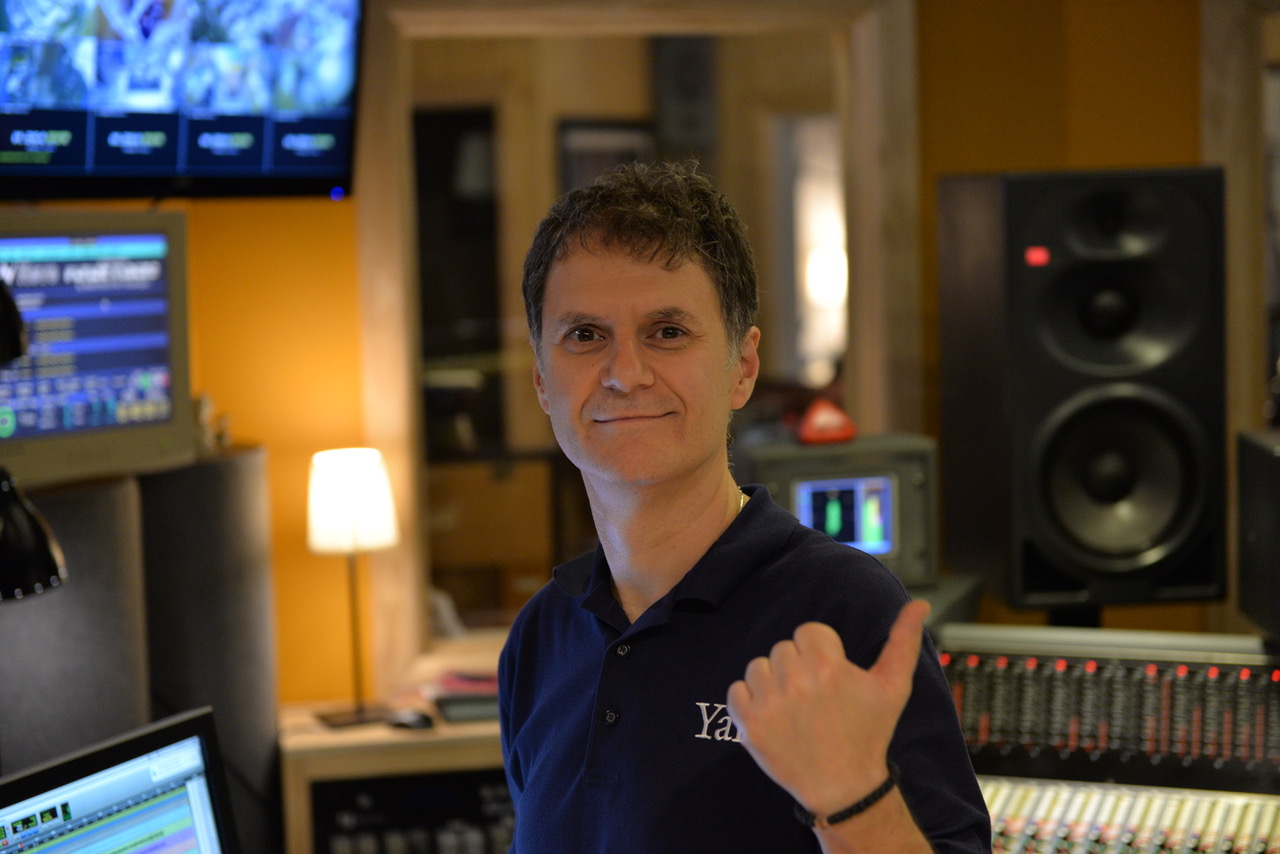
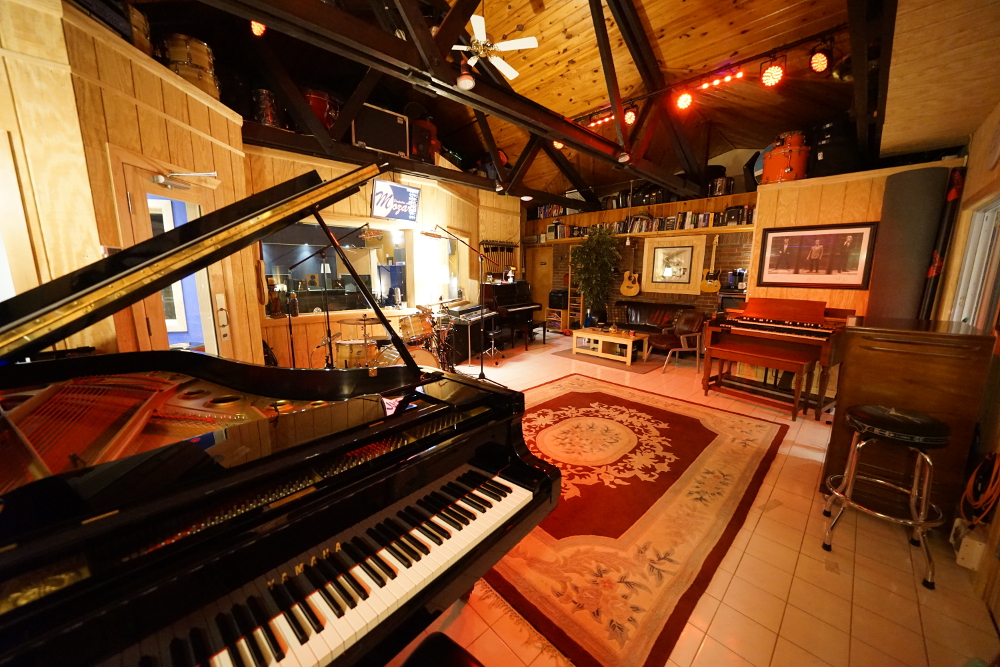

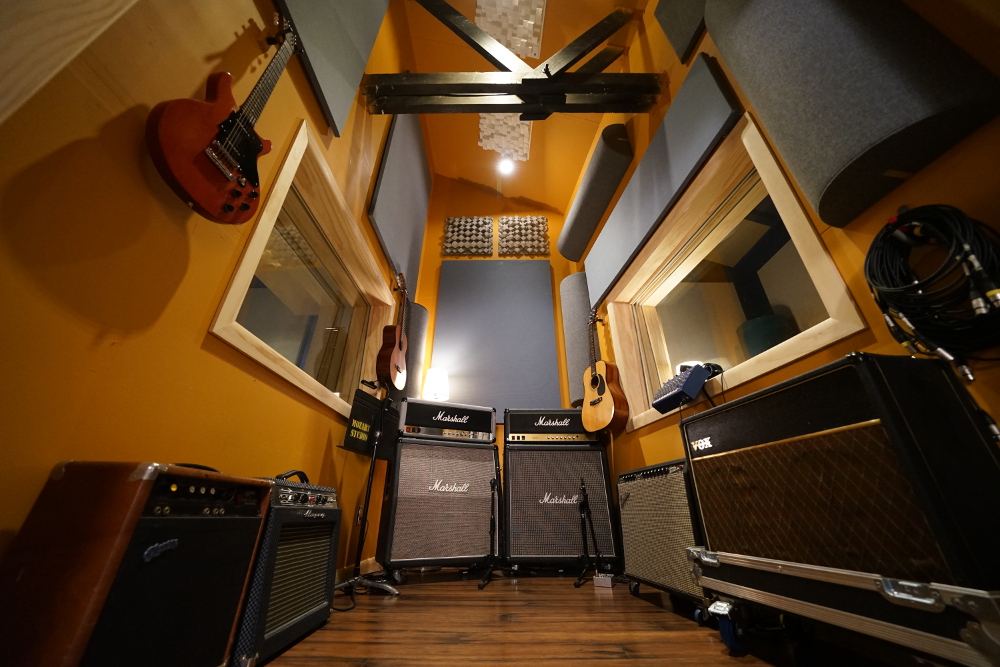
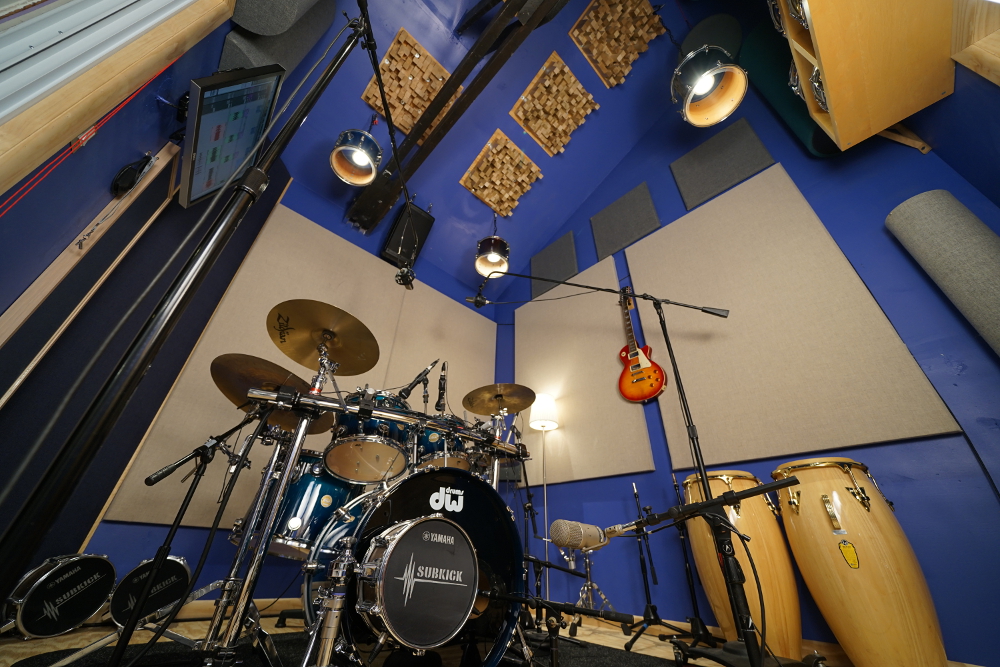
Jamie McClanahan
December 4, 2017 at 12:27 pm (7 years ago)great article and well deserved… I have been a client of his and he is amazing!
Ricardo Wheelock
December 7, 2017 at 1:39 pm (7 years ago)cool story, thanks!